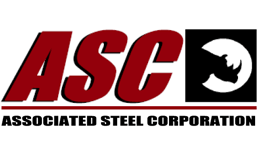There are Austenitic Grades (200 and 300 series), sometimes referred to as type 18-8. The 300 series, particularly types 304 and 316, are the most used grades in maintenance applications.
-
• Grain Type of Austenite
• Generally non-magnetic (will not attract a normal magnet)
• Not hardenable by thermal treatment (Heat Treating)
• Work-harden under impact, i.e. Cold work, strain hardening, etc
• Generally functional up to about 1500F+ service temp.
There are Martensitic Grades (400 series most common)
-
• Grain type of Martensite
• Attract a magnet
• Are hardenable by thermal treatment
• Most often used where higher hardness and higher strength are required
There are Precipitation Hardening grades (PH Stainless)
-
• Respond to a particular thermal treatment resulting in elevated strength properties
• Considered to be an upgrade to the 400 series grades relative to toughness (combination of strength and ductility)
“Exotics” are the All Stars.
-
• Special trade-name products.
• Aquamet, Mir50, Waspaloy, Nitronic 50, Sea-Cure, Hastelloy, Custom 450, Greek Ascoloy.
• Unique grades with elevated properties required for specific applications, and/or, conditions.
Their developers have sufficient confidence in their products to identify them back to the developer by means of a trade-name. Increased price may be of little or no concern relative to potential savings resulting from the advantages realized.
Duplex Stainless
-
• Identified by a unique grain structure of austenite and ferrite
• Most widely recognized modified group of stainless steel
• Particular interest to industries that encounter sour service conditions
• “Sour Service” is identified by the presence of Hydrogen Sulfide (H2S) in a content sufficient to cause cracking in steel parts.
A word of caution regarding improved grades of steel. THE DOUBLE-EDGED SWORD; As you improve toughness, hardness, corrosion resistance, etc., you create alloys that are better prepared to resist attack. They don’t differentiate between “adverse conditions” and intentional processing. User unfriendliness may be inherited as part of the bargain.You may get an advantage but one that requires significant precautions in machining, or welding, etc.
Some trade-name products have addressed user precautions and fabrication headaches and taken steps to minimize them. That will be listed as part of the advantage offered. Materials science and product development is happening daily. New products can be game-changers. Be as aware of the products user guidelines, as you are of the potential benefits. Make sure the steel will make the part, and the part will make it into service.
-Howard Thomas, February 1st, 2023
